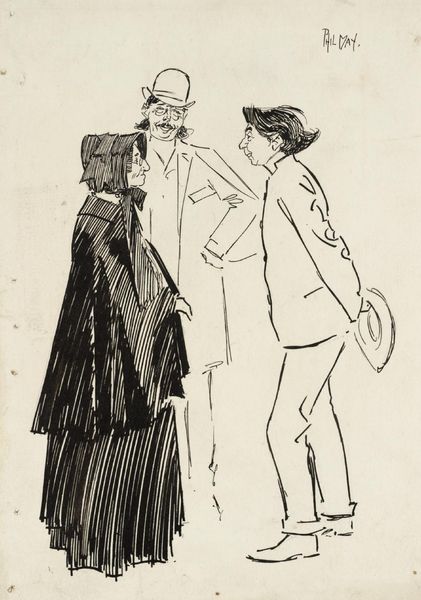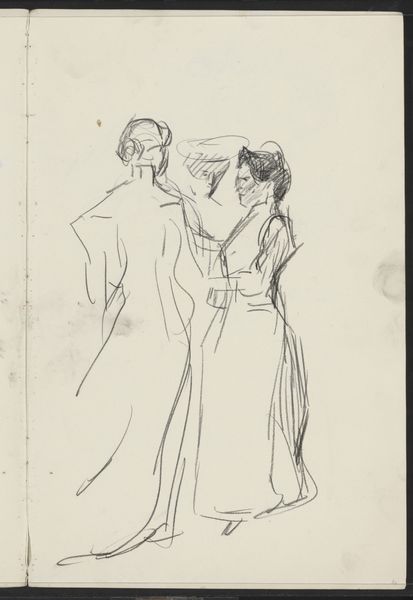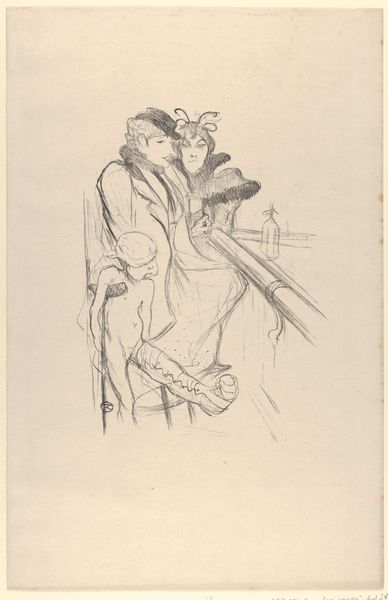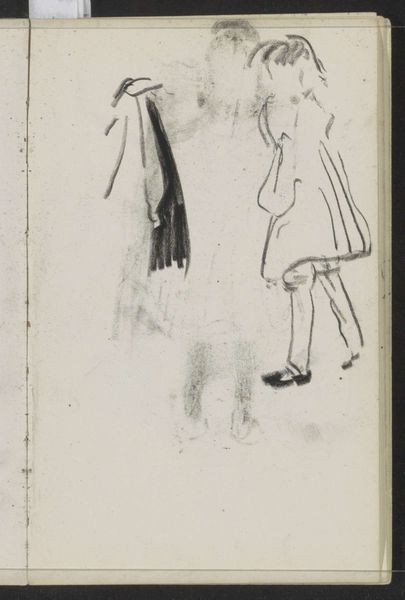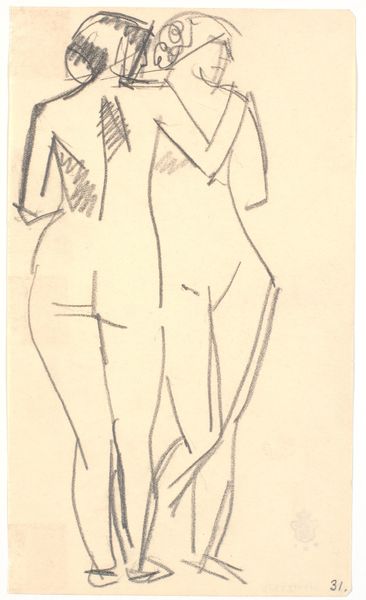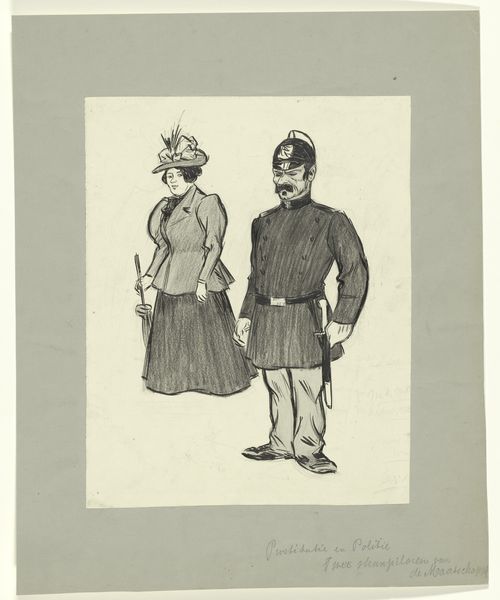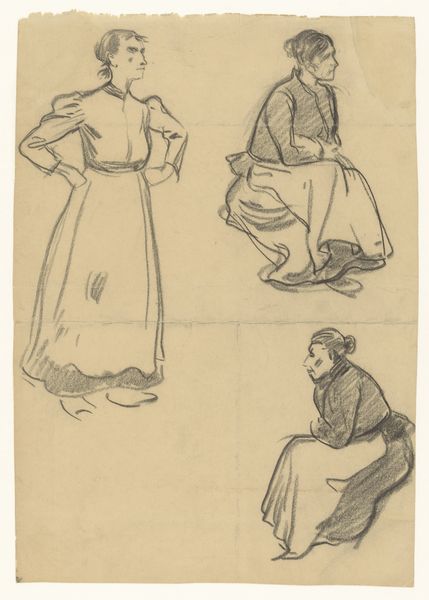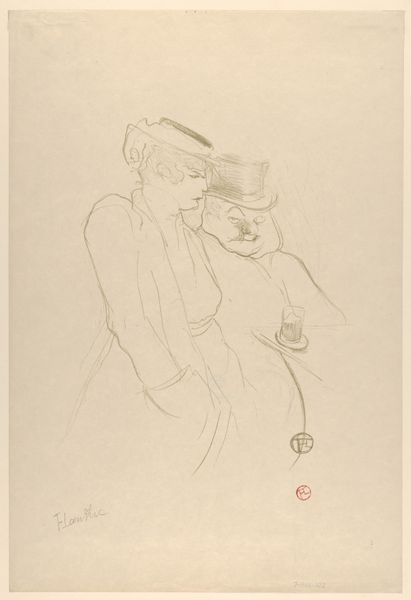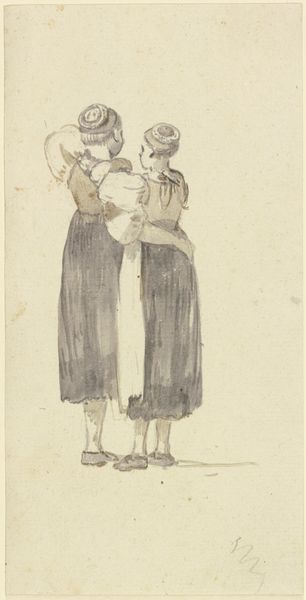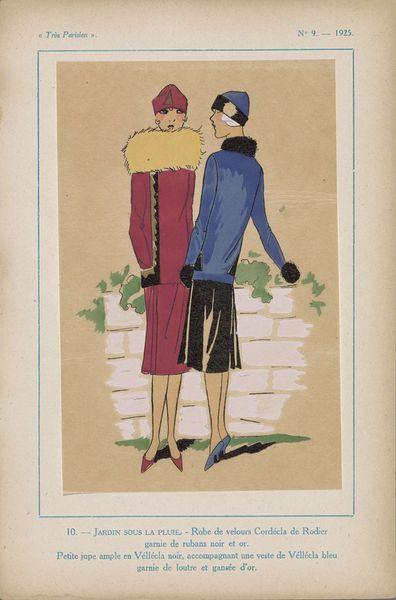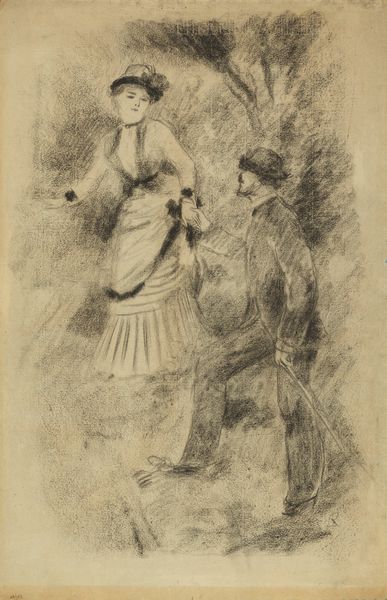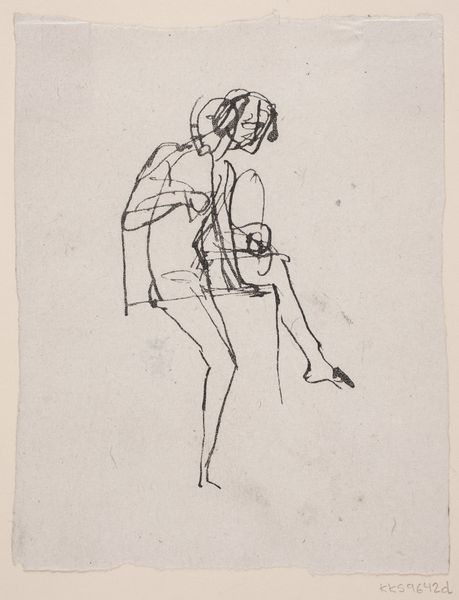
Dimensions: height 261 mm, width 202 mm
Copyright: Rijks Museum: Open Domain
Editor: Here we have Leo Gestel's "Wandelend stel," created sometime between 1891 and 1941, a pencil drawing housed at the Rijksmuseum. There’s something casual and intimate about this sketch. The subjects are turned away from us. What do you see when you look at this drawing? Curator: Immediately striking is Gestel’s economy of line. Note how few strokes are deployed to suggest form, texture, and movement. The structural relationships between the figures are equally compelling: Observe how the artist used line thickness and pressure to imply depth, placing the female figure slightly behind the male through a subtle reduction in line weight. What effect does that have? Editor: It's like they’re walking at different speeds, or maybe lost in separate thoughts even while being together. Is that common in sketches like this? Curator: Common, perhaps, but effective here due to the way it echoes the subtle discordances of line and tone across the piece. Consider the relationship between the textures suggested by the man's plaid suit, and the woman's simple dress. Editor: So, you're focusing on how the elements relate to each other formally to build a sense of their relationship as well? Curator: Precisely. Line, texture, spatial arrangement—these are the visual cues that shape our understanding. The lack of detail invites the viewer to participate in the act of constructing meaning. And notice also, the toning of the paper—how does that color choice help define the contours and texture in the sketch? Editor: It makes the lighter areas pop, right? Thank you! That close reading has opened up a completely new way for me to interpret sketches. Curator: Indeed. A rigorous attention to the elements of form unlocks a depth of meaning.
Comments
No comments
Be the first to comment and join the conversation on the ultimate creative platform.
